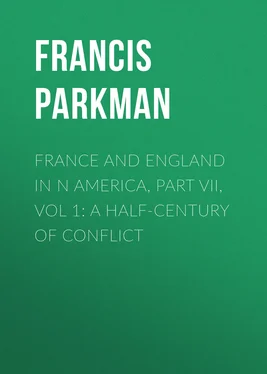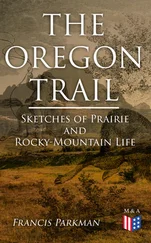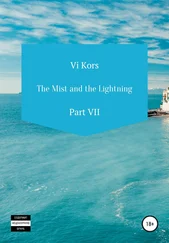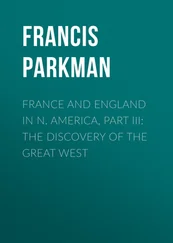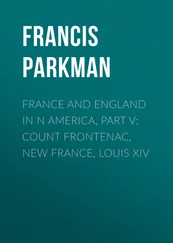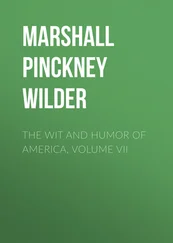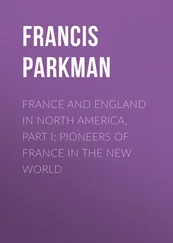Francis Parkman - France and England in N America, Part VII, Vol 1 - A Half-Century of Conflict
Здесь есть возможность читать онлайн «Francis Parkman - France and England in N America, Part VII, Vol 1 - A Half-Century of Conflict» — ознакомительный отрывок электронной книги совершенно бесплатно, а после прочтения отрывка купить полную версию. В некоторых случаях можно слушать аудио, скачать через торрент в формате fb2 и присутствует краткое содержание. Жанр: foreign_prose, История, foreign_edu, foreign_antique, на английском языке. Описание произведения, (предисловие) а так же отзывы посетителей доступны на портале библиотеки ЛибКат.
- Название:France and England in N America, Part VII, Vol 1: A Half-Century of Conflict
- Автор:
- Жанр:
- Год:неизвестен
- ISBN:нет данных
- Рейтинг книги:3 / 5. Голосов: 1
-
Избранное:Добавить в избранное
- Отзывы:
-
Ваша оценка:
- 60
- 1
- 2
- 3
- 4
- 5
France and England in N America, Part VII, Vol 1: A Half-Century of Conflict: краткое содержание, описание и аннотация
Предлагаем к чтению аннотацию, описание, краткое содержание или предисловие (зависит от того, что написал сам автор книги «France and England in N America, Part VII, Vol 1: A Half-Century of Conflict»). Если вы не нашли необходимую информацию о книге — напишите в комментариях, мы постараемся отыскать её.
France and England in N America, Part VII, Vol 1: A Half-Century of Conflict — читать онлайн ознакомительный отрывок
Ниже представлен текст книги, разбитый по страницам. Система сохранения места последней прочитанной страницы, позволяет с удобством читать онлайн бесплатно книгу «France and England in N America, Part VII, Vol 1: A Half-Century of Conflict», без необходимости каждый раз заново искать на чём Вы остановились. Поставьте закладку, и сможете в любой момент перейти на страницу, на которой закончили чтение.
Интервал:
Закладка:
"The Nations," writes Schuyler, "are full of factions." There was a French party and an English party in every town, especially in Onondaga, the centre of intrigue. French influence was strongest at the western end of the confederacy, among the Senecas, where the French officer Joncaire, an Iroquois by adoption, had won many to France; and it was weakest at the eastern end, among the Mohawks, who were nearest to the English settlements. Here the Jesuits had labored long and strenuously in the work of conversion, and from time to time they had led their numerous proselytes to remove to Canada, where they settled at St. Louis, or Caughnawaga, on the right bank of the St. Lawrence, a little above Montreal, where their descendants still remain. It is said that at the beginning of the eighteenth century two-thirds of the Mohawks had thus been persuaded to cast their lot with the French, and from enemies to become friends and allies. Some of the Oneidas and a few of the other Iroquois nations joined them and strengthened the new mission settlement; and the Caughnawagas afterwards played an important part between the rival European colonies.
The "Far Indians," or "Upper Nations," as the French called them, consisted of the tribes of the Great Lakes and adjacent regions, Ottawas, Pottawattamies, Sacs, Foxes, Sioux, and many more. It was from these that Canada drew the furs by which she lived. Most of them were nominal friends and allies of the French, who in the interest of trade strove to keep these wild-cats from tearing one another's throats, and who were in constant alarm lest they should again come to blows with their old enemies, the Five Nations, in which case they would call on Canada for help, thus imperilling those pacific relations with the Iroquois confederacy which the French were laboring constantly to secure.
In regard to the "Far Indians," the French, the English, and the Five Iroquois Nations all had distinct and opposing interests. The French wished to engross their furs, either by inducing the Indians to bring them down to Montreal, or by sending traders into their country to buy them. The English, with a similar object, wished to divert the "Far Indians" from Montreal and draw them to Albany; but this did not suit the purpose of the Five Nations, who, being sharp politicians and keen traders, as well as bold and enterprising warriors, wished to act as middle-men between the beaver-hunting tribes and the Albany merchants, well knowing that good profit might thus accrue. In this state of affairs the converted Iroquois settled at Caughnawaga played a peculiar part. In the province of New York, goods for the Indian trade were of excellent quality and comparatively abundant and cheap; while among the French, especially in time of war, they were often scarce and dear. The Caughnawagas accordingly, whom neither the English nor the French dared offend, used their position to carry on a contraband trade between New York and Canada. By way of Lake Champlain and the Hudson they brought to Albany furs from the country of the "Far Indians," and exchanged them for guns, blankets, cloths, knives, beads, and the like. These they carried to Canada and sold to the French traders, who in this way, and often in this alone, supplied themselves with the goods necessary for bartering furs from the "Far Indians." This lawless trade of the Caughnawagas went on even in time of war; and opposed as it was to every principle of Canadian policy, it was generally connived at by the French authorities as the only means of obtaining the goods necessary for keeping their Indian allies in good humor.
It was injurious to English interests; but the fur-traders of Albany and also the commissioners charged with Indian affairs, being Dutchmen converted by force into British subjects, were, with a few eminent exceptions, cool in their devotion to the British Crown; while the merchants of the port of New York, from whom the fur-traders drew their supplies, thought more of their own profits than of the public good. The trade with Canada through the Caughnawagas not only gave aid and comfort to the enemy, but continually admitted spies into the colony, from whom the governor of Canada gained information touching English movements and designs.
The Dutch traders of Albany and the importing merchants who supplied them with Indian goods had a strong interest in preventing active hostilities with Canada, which would have spoiled their trade. So, too, and for similar reasons, had influential persons in Canada. The French authorities, moreover, thought it impolitic to harass the frontiers of New York by war parties, since the Five Nations might come to the aid of their Dutch and English allies, and so break the peaceful relations which the French were anxious to maintain with them. Thus it happened that, during the first six or seven years of the eighteenth century, there was a virtual truce between Canada and New York, and the whole burden of the war fell upon New England, or rather upon Massachusetts, with its outlying district of Maine and its small and weak neighbor, New Hampshire. 14 14 The foregoing chapter rests on numerous documents in the Public Record Office, Archives de la Marine, Archives Nationales, N. Y. Colonial Documents , vols. iv. v. ix., and the Second and Third Series of the Correspondance Officielle at Ottawa.
CHAPTER II
Michilimackinac.—La Mothe-Cadillac: his Disputes with the Jesuits.—Opposing Views.—Plans of Cadillac: his Memorial to the Court; his Opponents.—Detroit founded. The New Company.—Detroit changes Hands.—Strange Act of the Five Nations.
In the few years of doubtful peace that preceded Queen Anne's War, an enterprise was begun, which, nowise in accord with the wishes and expectations of those engaged in it, was destined to produce as its last result an American city.
Antoine de La Mothe-Cadillac commanded at Michilimackinac, whither Frontenac had sent him in 1694. This old mission of the Jesuits, where they had gathered the remnants of the lake tribes dispersed by the Iroquois at the middle of the seventeenth century, now savored little of its apostolic beginnings. It was the centre of the western fur-trade and the favorite haunt of the coureurs de bois . Brandy and squaws abounded, and according to the Jesuit Carheil, the spot where Marquette had labored was now a witness of scenes the most unedifying. 15 15 See "Old Régime in Canada," 383.
At Michilimackinac was seen a curious survival of Huron-Iroquois customs. The villages of the Hurons and Ottawas, which were side by side, separated only by a fence, were surrounded by a common enclosure of triple palisades, which, with the addition of loopholes for musketry, were precisely like those seen by Cartier at Hochelaga, and by Champlain in the Onondaga country. The dwellings which these defences enclosed were also after the old Huron-Iroquois pattern,—those long arched structures covered with bark which Brébeuf found by the shores of Matchedash Bay, and Jogues on the banks of the Mohawk. Besides the Indians, there was a French colony at the place, chiefly of fur-traders, lodged in log-cabins, roofed with cedar bark, and forming a street along the shore close to the palisaded villages of the Hurons and Ottawas. The fort, known as Fort Buade, stood at the head of the little bay. 16 16 Relation de La Mothe-Cadillac , in Margry, v. 75.
The Hurons and Ottawas were thorough savages, though the Hurons retained the forms of Roman Catholic Christianity. This tribe, writes Cadillac, "are reduced to a very small number; and it is well for us that they are, for they are ill-disposed and mischievous, with a turn for intrigue and a capacity for large undertakings. Luckily, their power is not great; but as they cannot play the lion, they play the fox, and do their best to make trouble between us and our allies."
Читать дальшеИнтервал:
Закладка:
Похожие книги на «France and England in N America, Part VII, Vol 1: A Half-Century of Conflict»
Представляем Вашему вниманию похожие книги на «France and England in N America, Part VII, Vol 1: A Half-Century of Conflict» списком для выбора. Мы отобрали схожую по названию и смыслу литературу в надежде предоставить читателям больше вариантов отыскать новые, интересные, ещё непрочитанные произведения.
Обсуждение, отзывы о книге «France and England in N America, Part VII, Vol 1: A Half-Century of Conflict» и просто собственные мнения читателей. Оставьте ваши комментарии, напишите, что Вы думаете о произведении, его смысле или главных героях. Укажите что конкретно понравилось, а что нет, и почему Вы так считаете.
